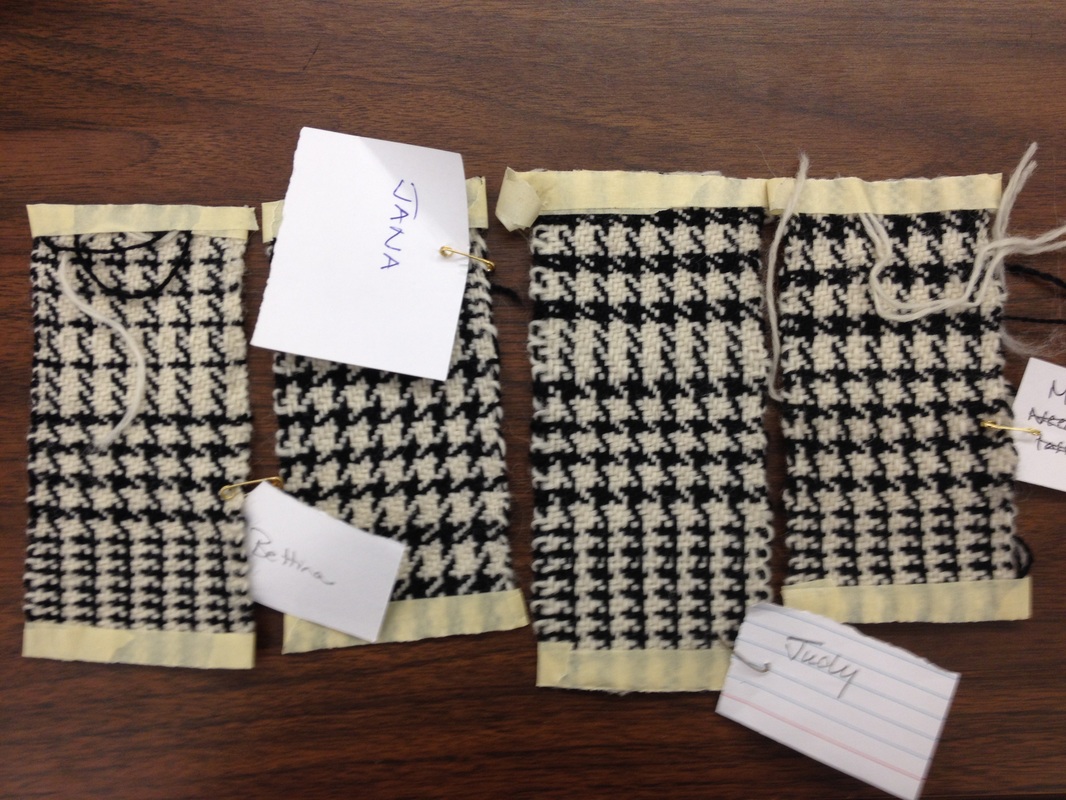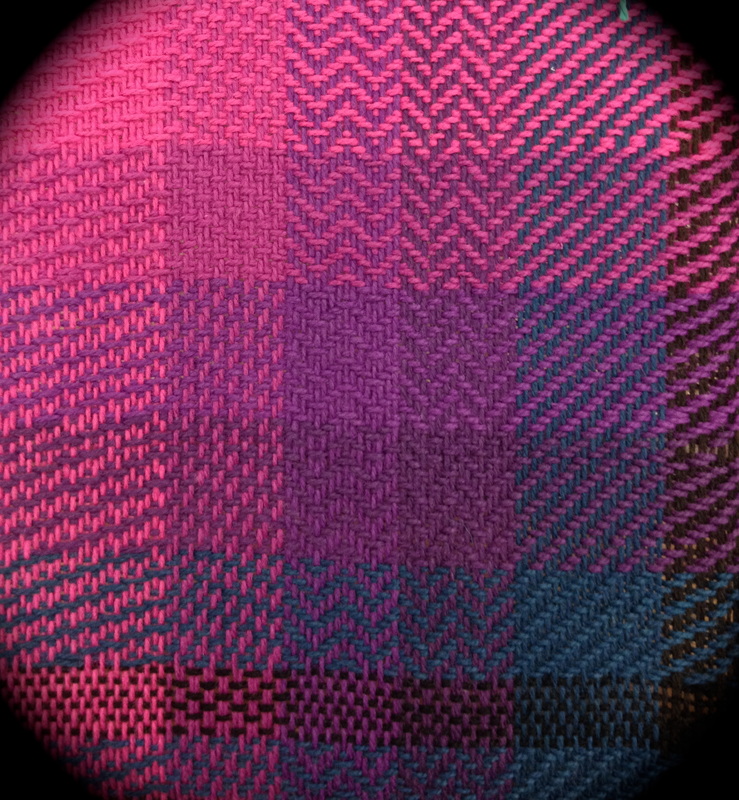|
Students in the class were asking about online resources for learning to weave. I don't know of any really, but found this one on the Craftsy site. If anyone knows of any let me know and I will post. I haven't done this one, but I might just to check it out. We are having our last class this week, wow it went fast. Here are some examples of 1st and 2nd warps, and our sample Houndstooth.
I just got a new book, Weaving Innovations from the Bateman Collection. In the forward Madelyn van der Hoogt writes some really encouraging words for beginner weavers, but also a reminder to seasoned weavers of the infinite possibilities of weaving.
"When we first start to weave, most of us are overwhelmed by all there is to learn. We are faced with an unfamiliar vocabulary - almost a complete new language - as we begin to acquire our weaving libraries. Only after many warps and much reading and re-reading (along with frustration and error) do we begin to understand how weave structures work. We learn to distinguish twill from plain weave; we discover lace weaves, summer and winter, overshot, and the versatile design potential of twills. As most weavers have done before us, we assume that the weave structures we find in hand weaving literature (representing weaving traditions from all over the world) comprised most, if not all, of what's possible. It is often even said that here is nothing "new" in weaving, that it is the combination of weave structure, yarn type, and color interaction that makes a particular cloth unique." She goes on to say how William Batemen did not stop at following patterns, or adhered to the belief that there was nothing "new" to be done in weaving. Batemen was a true innovator and he explored the basic principles of weave structure with the mind of a scientist (he was a chemist) and the heart of an educator. He left a sizeable legacy of weave samples that he made as a reference collection for weaving classes. These samples are now housed with the Seattle Weavers' Guild, and this book documents a selection of the most unique and shows the breadth of his work. Below is an example of a colour study by a student in this current class. |
This blog is about teaching and learning about weavingArchives
May 2016
|





 RSS Feed
RSS Feed